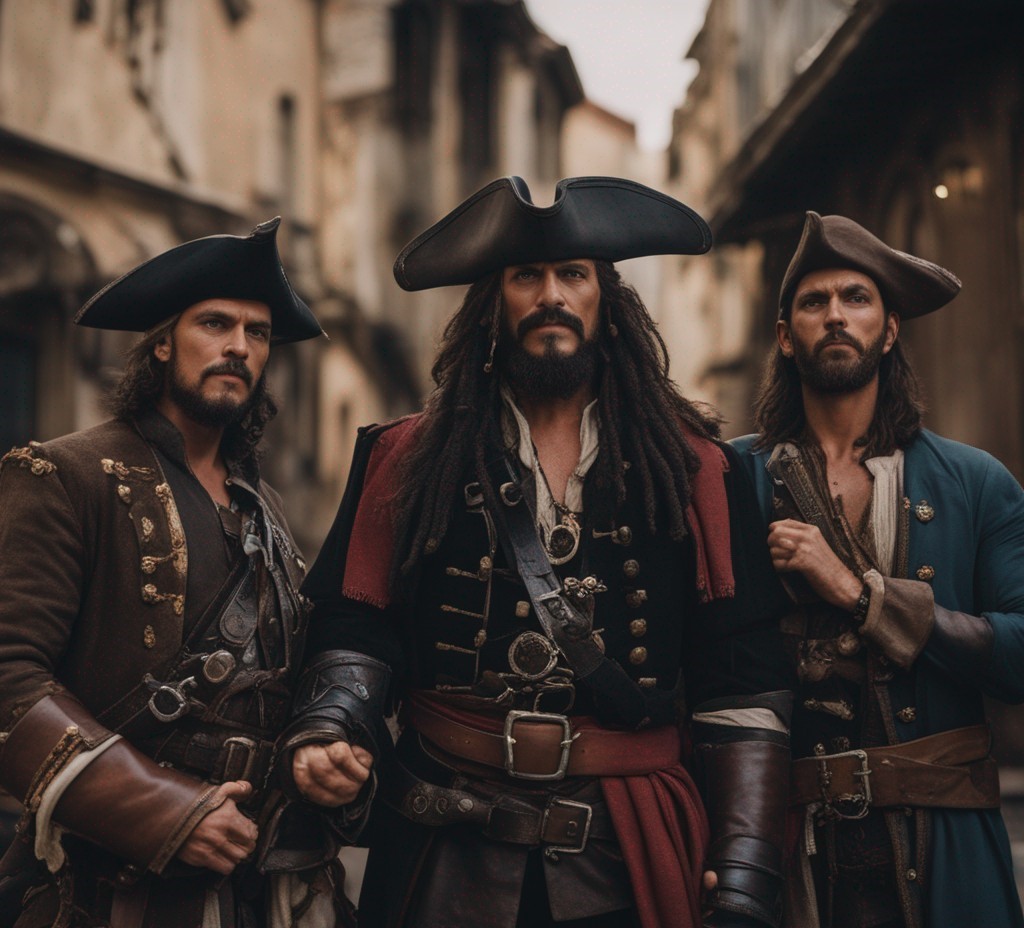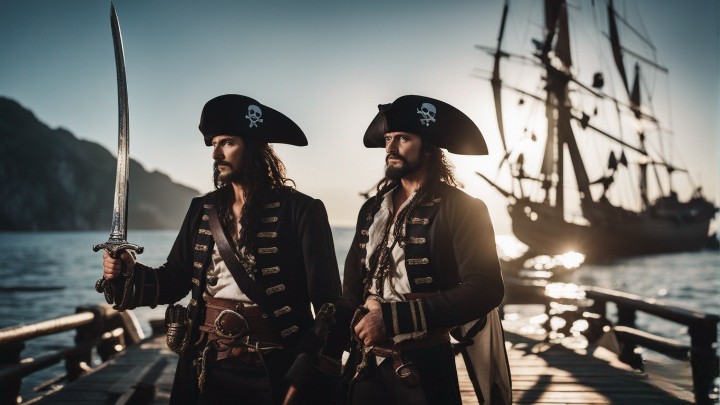The Golden Age of Piracy, spanning roughly from the late 17th century to the early 18th century, was a time when the high seas were ruled by ruthless and infamous pirates. These swashbucklers terrorized merchant ships, established their own pirate havens, and left behind a legacy that still captivates our imaginations today. In this blog post, we embark on a thrilling journey through this tumultuous period, exploring the lives, exploits, and legends of some of the most notorious pirates in history.
1. The Brethren of the Coast : Golden age of piracy

The Golden Age of Piracy began with the emergence of the Brethren of the Coast, a loose alliance of pirates who operated in the Caribbean. These pirates, often former privateers, turned to a life of plunder and adventure. Led by famous figures like Henry Morgan, they attacked Spanish settlements and ships, amassing great wealth and notoriety.
2. The Notorious Blackbeard
One of the most feared names in pirate history, Blackbeard, whose real name was Edward Teach or Thatch, terrorized the American colonies and the West Indies. With his thick black beard and lit fuses burning beneath his hat, he struck fear into the hearts of his victims. Blackbeard’s exploits, including blockading the port of Charleston and marauding along the eastern seaboard, earned him a place in pirate legend.
3. The Enigmatic Captain Kidd
Captain William Kidd’s story is one of ambiguity. Originally a privateer sanctioned by governments, he turned pirate after a series of unfortunate events. Kidd’s adventures took him to the Indian Ocean, where he hunted pirates and sought treasure. However, he was eventually captured, tried, and hanged, leaving behind a legacy shrouded in mystery.
4. Anne Bonny and Mary Read: Feisty Female Pirates
In a world dominated by men, Anne Bonny and Mary Read stood out as two of the most formidable female pirates. Disguising themselves as men, they joined pirate crews and fought alongside their male counterparts. Their stories of piracy, capture, and daring escapes remain an inspiration to this day.
5. The Pirate Havens
Pirates needed safe harbors to repair their ships, divide their loot, and enjoy their ill-gotten gains. Infamous pirate havens like Nassau in the Bahamas and Port Royal in Jamaica became bustling centers of piracy, where pirates could revel in their newfound wealth and freedom.
6. Pirate Flags: The Dreaded Jolly Roger
The Jolly Roger, with its skull and crossbones design, became the iconic symbol of piracy. Pirates flew this flag to strike fear into their victims’ hearts. We delve into the symbolism and history of this infamous pirate banner.
7. The End of an Era
The Golden Age of Piracy couldn’t last forever. As governments and empires strengthened their navies and tightened security, piracy began to decline. Infamous pirates met their fates, and pirate havens were dismantled. The era of romanticized piracy was coming to an end.
8. The Pirate Code: Unwritten Rules of Piracy
The life of a pirate was governed by a set of unwritten rules known as the Pirate Code. While not a formal legal system, the Pirate Code served as a rough guideline for pirate crews. These codes often included rules about how loot would be divided, how disputes would be settled, and how discipline would be maintained. Pirates believed that a strong code was essential for the survival of their lawless communities, and breaking these rules could result in severe punishment or even death. The Pirate Code provides a fascinating insight into the pirate way of life and the unique sense of honor and loyalty that existed among these outlaws.
9. Pirate Weapons and Tactics
Pirates were known for their cunning tactics and deadly weapons. Pirate ships were equipped with cannons, muskets, and cutlasses, making them formidable opponents in sea battles. Pirates used tactics such as boarding, surprise attacks, and intimidation to overpower their prey. Understanding these tactics is crucial to appreciating the audacity and resourcefulness of pirates during the Golden Age of Piracy.
10. The Pirate’s Life: Myths vs. Reality
The popular image of pirates often includes images of buried treasure maps, parrots on shoulders, and peg legs. While some of these elements are grounded in reality, many are exaggerated or entirely fictional. Exploring the myths and misconceptions about pirates can be a fascinating journey. For example, the idea of buried treasure was not as common as portrayed in popular culture, and not all pirates had a pet parrot or a peg leg. Distinguishing fact from fiction adds depth to the history of piracy.
11. Pirates in Pop Culture: From Treasure Island to Pirates of the Caribbean
Pirates have captured the imaginations of storytellers for centuries. From Robert Louis Stevenson’s “Treasure Island” to the wildly popular “Pirates of the Caribbean” film franchise, pirates have been the central characters in numerous works of fiction. Analyzing the portrayal of pirates in literature, movies, and other media can reveal how these figures have been romanticized, vilified, or reimagined over the years. It’s a testament to the enduring appeal of pirates that they continue to be featured in various forms of entertainment.
12. Pirate Legacy and Modern Piracy
While the Golden Age of Piracy may be a thing of the past, piracy has not disappeared from the modern world. Today, pirates operate in different parts of the globe, particularly in areas with lax maritime security. Modern piracy poses significant challenges to global trade, with pirates targeting commercial vessels and crew members for ransom. Understanding the historical context of piracy can shed light on the complex issue of modern piracy and the efforts to combat it.
Legacy of the Golden Age
The Golden Age of Piracy may have ended centuries ago, but its legacy lives on in stories, movies, and our cultural imagination. These pirates, with their daring escapades, have left an indelible mark on history. The Brethren of the Coast, Blackbeard, Captain Kidd, Anne Bonny, and Mary Read, among others, continue to fascinate and entertain us, reminding us of a time when the high seas were ruled by legends and infamy. As we sail further into the 21st century, the tales of these pirates remain an enduring testament to the human spirit of adventure, rebellion, and the thirst for freedom on the high seas.

